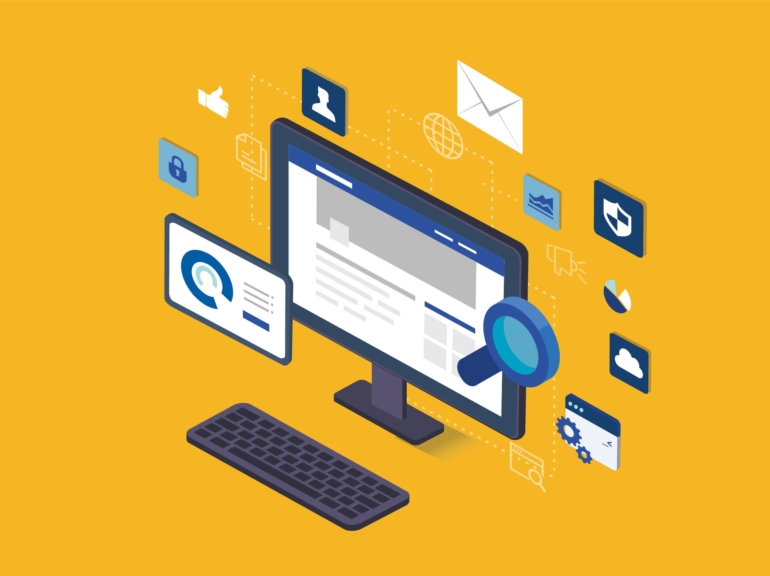
The successful onboarding and training of new employees is a critical success factor for any contact center. When well executed, it establishes the foundation for employee engagement and talent retention and also enables efficient and effective contact center operations. By connecting with new hires prior to the start of training, the training team sets expectations and prepares trainees for the training experience. However, for Work at Home (WAH) training to be effective, the training team must go beyond reliance on traditional brick and mortar techniques to deliver robust content that prepares the new hire for a virtual operating environment.
PRIOR TO TRAINING DELIVERY
To improve agent engagement and reduce no-show rates for Day One of training, prepare new hires for the training experience by introducing them to the training team assigned to their class, setting expectations for the virtual classroom environment, and describing any pre-training tasks required to be completed. The guidance below presumes the hiring process has been completed, the job offer has been extended and accepted by each trainee, and the training organization has received accurate contact information and the preferred contact channel for each new hire.
INTRODUCTIONS & TRAINEE PROFILE
Get to know students before the course begins. Set up a unique URL for new hires to post a picture of themselves and complete a profile before the first day of training. Establish a profile template to avoid the awkward sharing of too much information. The new hire should complete and submit their profile by an established deadline date, ideally a couple of days before the first training class. Instructors should follow-up with any agents who do not complete the profile on time.
Potential profile information may include:
- A photo of themselves
- Their location (city/state)
- Their full name
- Their nickname preference (if applicable)
- Favorite movies or books
- Hobbies or travel interests
- Number of kids or names/types of pets (if desired)
- Last job
- Why they are eager to work for <COMPANY>
- What they plan to be doing in 30 years
EXPECTATIONS
Provide an overview of the classroom agenda for each individual of training. Provide the name of the instructor and their profile. If a subject matter expert (SME) or supervisor will be assisting with training, provide their name(s) and profile information as well.
TECHNOLOGY
Ensure participants have the required equipment to participate fully in each classroom session. If the employer is not providing the equipment and connectivity, provide a list of technical requirements in advance (e.g., PC requirements, internet connectivity specifications, single vs. dual screens, etc.). Provide a Zoom Room or 800 number to verify or confirm their configuration and test connectivity in advance. Potentially have the WAH Tech Help Desk conduct the technical tests. During this session cover the basics of how to participate in a virtual training session: how to raise their hand to ask questions, use of chat, how to mute audio, etc. Ensure that the instructors, subject matter experts, supervisors, and anyone supporting training, also goes through the systems check process.
PREWORK
Distribute any prework to be completed prior to the training sessions and advise new hires of the due date and the process for returning completed materials. Prework may consist of compliance/security/ confidentiality documents to be signed, an overview of the company, or a simple self-study module providing industry literacy. You may use a tool such as DocuSign to acknowledge receipt and completion of the documents or you may elect a less formal approach. Contact new hires who have not completed prework by the due date to reduce the Day One no-show rate.
NEW HIRE SUPERVISOR
A concept often used by McIntosh clients is to assign a designated new hire supervisor(s) to the class. The new hire supervisor is selected based on their unique ability to develop recent graduates and switch to a different new hire team every two to three months. After the nesting period, new trainees graduate from a new hire supervisor to an established operational team, allowing the organization to leverage the new hire supervisors’ skills across multiple teams. An introductory phone call by the new hire supervisor to welcome the new hire to the team prior to the start of training has been shown to reduce the Day One training no-show rate.
VIRTUAL ENVIRONMENT
Set-up an online virtual video room and plan to train no more than ten people per session. All participants should have audio and video capabilities during the sessions with their system capabilities and access to the virtual training room tested in advance (as noted above).
INSTRUCTOR EXPERTISE
Participants expect the trainer to be the expert, and that includes demonstrating competence in using technology to present the training materials. The instructor should practice using the equipment and training software prior to Day One. They should understand and be proficient with classroom tools, understanding how to adjust the volume controls, how to post questions, use white board functionality (if available), use chat functionality, and how to recognize participant questions (generally a raised hand or equivalent in the virtual platform).
CLASSROOM APPROACH & GUIDANCE
TIMING OF CONTENT
Follow the agenda and the timeline—deliver on the expectations you set. In general, have everyone stand and stretch at least once per hour for five minutes. Lead the class in simple stretch exercises to enhance their ability to focus. As the team becomes more comfortable with these stretch periods, have members of the class lead the stretches. When presenting materials as a “talking head,” encourage questions from the group or toss out prepared questions to gauge participant engagement. Nature breaks should be embedded in the timeline, so be sure to take these as planned.
USE OF VISUALS
Slides should provide an overview of the material being covered with speaker notes covering the details. If a slide is too detailed, break the content into several slides. If participants cannot read all the words on the slide from their PC monitors, it is too detailed.
VARIETY IS THE “SPICE” OF TRAINING
Savvy trainers mix things up by introducing videos, full call examples, call snippets (portions of calls), or classroom exercises for a change of pace. People learn differently, so attempt to provide materials for auditory, visual, and tactile learners. Slide transition animations can help vary the pace but if excessive, they lose their impact. You can also ask the class to summarize/review major points in the most recent module to encourage engagement. Be spontaneous when appropriate, stopping to ask questions or provide additional insights on a topic (such as a personal story or example), especially when you sense that class attention may be waning.
LINK KPIs AND TRAINING
Make the link between KPIs and training clear. This should be covered in the curriculum but ensure you emphasize it. A WIIFM (what’s in it for me) encourages engagement and demonstrates the personal value of the concept being taught. Reinforce the linkage to customers by using customer experience slides and survey verbatims that provide insights on what customers value (traditionally, resolution, not wasting their time, easy to reach someone when needed). Remember that WIIFMs are supposed to speak to what an agent values. Common agent WIIFMs may include the following, but do not hesitate to ask and discuss what your company’s agents value in the work experience:
- I get to learn something new, a new skill
- If I do well, I have the opportunity to be promoted and increase my income
- I want to feel like what I do makes a difference, that it is valuable
- I want to be recognized for the work I do
- I want to feel like I am achieving something
- I want a better shift (if shift bid opportunities are based on performance)
CURRICULUM REQUIREMENTS
- Create and publish agendas for all training classes including the timing of material to be covered. Utilize an LMS to archive training content, track agent completion, and maintain agent performance data (proficiency tests and/or certification exams).
- Compile a portfolio of diverse training media to be used when training: talking head presentation materials, computer-based training modules for systems drills, workbooks to enable self-study and develop functional and industry literacy, knowledge checks, structured exercises to be conducted during virtual video training (best if specific to interaction types/skills). We suggest the curriculum be delivered as follows:
- Up to 5% of the training may utilize self-directed study modules covering industry and functional literacy (e.g., technical support, customer service, sales, retention, reservations, order entry, etc.).
- 20-25% may be lecture based to cover product and service information. Soft skills and de-escalation training may be included in this content but will be practiced in side-by-sides or classroom role play exercises.
- Up to 10% may be automated CBT or simulated systems drills to cover and practice systems functionality
- 30-35% of training should be experience based, providing hands-on experience by leveraging live call recordings and call snippets, mentor virtual “side-by-side” sessions, or role plays in the virtual classroom
- Up to 5% may be delivered via product/service videos available on authorized web sites or shared through the virtual classroom setting
- Up to 5% of the training time may be utilized for testing
- ~18-20% of the training time (for an 8.5 hour day) should be used for nature breaks assuming a one-hour lunch break
- As is evident from these recommendations, large segments of the training must focus on reality driven skills where participants share and role model situations that resemble reality. The distribution of content over various media and approaches may be modified based on access to the tools required for delivery.
- While gamification seems to be something of a passing fad, it may be a valuable tool for virtual exercises. We find it particularly useful for impromptu tests or drills (may seem impromptu but are actually planned within the curriculum)
EXPOSING THE NEW HIRE TO REALITY
BUILD A CALL LIBRARY
Create a call recording library to be leveraged by training and supervisory personnel for new hire and remedial training.
- Carefully screen recorded calls, selecting those that demonstrate excellent call handling from hello to goodbye. These calls should be identified and archived for easy access by call type and the specific skills displayed. Calls are selected to reinforce specific training objectives and should be referenced in the curricula/facilitator guide or embedded in the training curricula.
- Create “call snippets” for training sessions. These are not full calls but shorter segments of calls that clearly demonstrate a desired call-handling skill (e.g., choice and assumptive closing techniques, appropriate empathy, etc.). It is critical that the person curating call snippets or segments have a clear understanding of the training requirements to identify call segments by call type and the behavior/outcome to be demonstrated.
CALL MONITORING
During the initial days in classroom training, the instructor should play customer calls (recorded and selected in advance for instructional value) to give new hires a sense of the call types and customer segments they will be asked to handle. While new hires are not yet trained on the nuances and requirements for call handling, this early introduction provides context and serves to establish the professional norms for call handling.
MENTORING FOR PERFORMANCE IMPROVEMENT
Identify, train, and certify high performing agents with excellent interpersonal skills as Subject Matter Experts (SMEs) who will be used as mentors during the training process.
- Early in the training, assign a SME to each new hire agent. Develop a training curriculum and certification process for mentors to ensure they provide consistent and effective guidance during mentoring sessions.
- Schedule virtual time for each new hire with their SME. The new hire will dial into the SME’s workstation to silently observe the SME taking calls (including observations of the SME’s screen navigation, if possible).
- During the mentoring session, the SME will go unavailable after each call, using after call work (ACW) time to recap the critical elements of the call with the new hire and discuss the systems and processes they used to resolve the caller’s issue or request. During ACW the new hire should be able to “barge” in and ask questions. If the new hire cannot, for technical reasons, view screen navigation, the discussion will focus on call handling skills and the processes required within the call.
- The virtual SME sessions may be recorded, curated for relevance, and if appropriate, included in the recording library. These live virtual sessions when recorded and curated become part of an extensive library of tools for supervisors to use when providing remedial training to struggling agents. The recorded sessions may also be used as examples for future new hire classes.
VIRTUAL SIDE-by-SIDES
After the new hire completes systems training, utilize recorded, curated calls as a virtual side-by-side session. These calls may be used by individual agents or as classroom team exercises. In this approach, the recorded calls will include screen capture enabling the new hires to observe the verbal and navigational skills of the expert agent. At the conclusion of the call, the expert agent will provide commentary on the critical aspects of the call, what tools he/she used, and how they might have improved the call. You will need to extend the ACW recording time allowance to capture this level of detail. This approach allows the expert agent to mentor an unlimited number of new hires and may be utilized by supervisors to provide remedial support to struggling agents.
AGENT-to-AGENT ROLE PLAYS
This approach requires two students, with one student using a prepared script to play the caller while the second student handles the caller’s request without a script. This role-play exercise should be conducted using a modified Wizard of Oz approach with agents looking away or to the side of the webcam so they can neither see each other’s facial expressions nor respond to body language. The instructor can set the stage for the exercise by asking an agent to help demonstrate how the role play is to be done.
Curricula developers should create specific scenarios that consist of the following:
- A customer script to be used by the student who will act the role of the caller
- A checklist for critiquing the call (both agents may review and evaluate based on checklist components)
- Accuracy of the information provided or of the action taken
- Agent’s use of soft skills (if appropriate to the call)
- Agent’s ability to control the call
- Others as appropriate to the call type
- A debrief document allows the students to review the call and compare their critique to the optimal approach. The debrief will identify critical call handling behaviors, the preferred call outcome, and any elements required during the call (compliance or informational).
- The last step in the exercise will be for both agents to play a call recording demonstrating how the call should have been handled.
- This approach is time consuming to develop but can deliver great dividends as the structure provides a realistic scenario, and the debrief materials and optimal call recording provide insights and illustrate the optimal approach.
SEMI-AUTOMATED ROLE-PLAYS
This approach enables students to practice call handling skills through a semi-automated role play. These sessions will be short, much like a call segment, and will target specific call handling behaviors and outcomes (e.g., accuracy, empathy, rapport, appropriate probing, etc.). Curricula developers should utilize a text to speech engine (e.g., Amazon Lex) to document scenarios and debriefs for individual agent practice. The agent’s exercise session is recorded as the speech engine makes a request and the student responds. Speech analytics can be used to identify if relevant phrases or key words were used by the agent and to identify gaps. The student should then play the optimal call interaction generated by the text to speech engine, comparing his/her handling to the approach taken in the optimal call replay. The technology is available; leveraging it to create relevant scenarios and build an exercise library will be time consuming.
SUCCESS FACTORS
Effective training of a WAH contact center staff is more complex and may be more challenging than training in traditional brick and mortar (BAM) environments. To ensure new hires graduate from the training and nesting experience with an understanding of the realities of the work, training and operational departments must partner to deliver proven content in new and innovative ways. Success requires that organizations adapt and deploy virtual training and communication tools, leverage existing resources in a virtual manner, and carefully select and certify supplemental resources to support the new hire experience.







